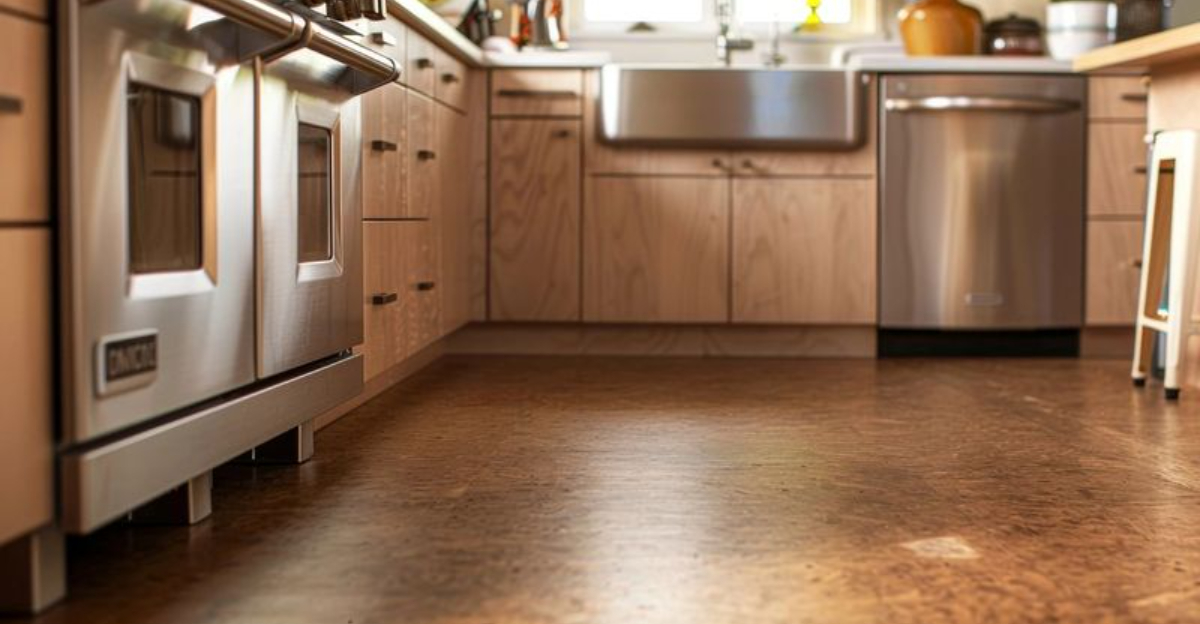Kitchen floors really take a beating, and let’s be honest, so do their trends. I’ve seen styles that once felt fresh start to age a whole space fast. Heading into 2025, designers are waving the flag on some kitchen flooring choices that have officially worn out their welcome.
If you’re thinking about updating your kitchen, now’s the perfect moment to dodge the outdated and step onto something timeless and beautiful.
I’m breaking down 9 flooring trends that are past their prime and sharing 8 expert-approved alternatives that can truly elevate your kitchen. Trust me, it all starts from the ground up.
1. Patterned Linoleum
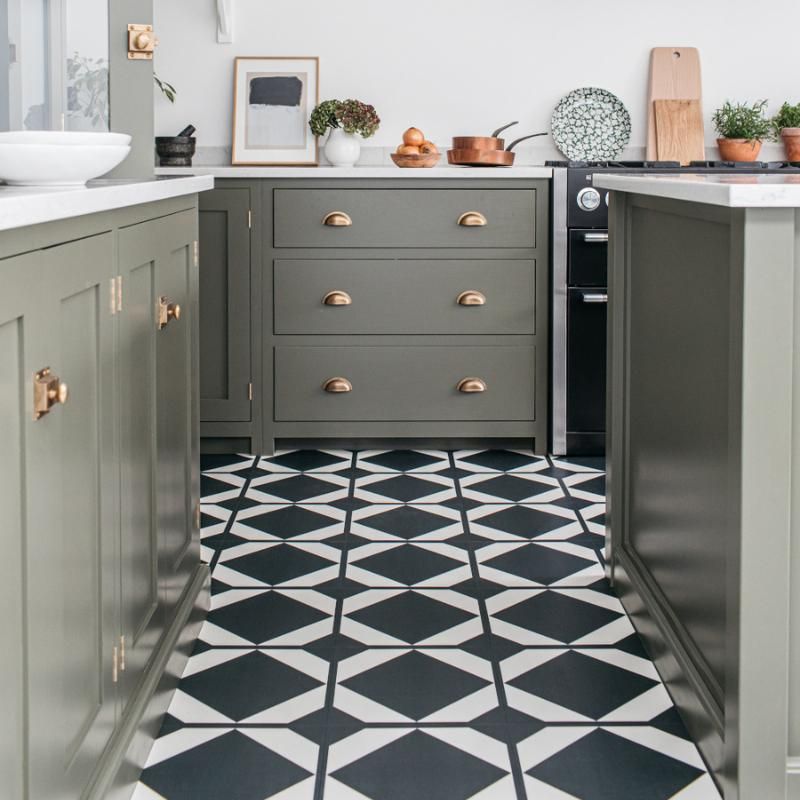
Remember when patterned linoleum felt like the budget-friendly answer to expensive tile? Those busy geometric designs and swirled patterns that once seemed so practical are now major red flags for outdated kitchens.
The problem goes beyond just looking old-fashioned. These patterns show every scuff mark, stain, and scratch, making your kitchen appear dirty even when it’s spotless.
Smart homeowners are switching to luxury vinyl plank flooring that mimics natural wood or stone. Modern LVP offers the same easy maintenance as linoleum but with sophisticated looks.
2. Tiny Mosaic Tiles
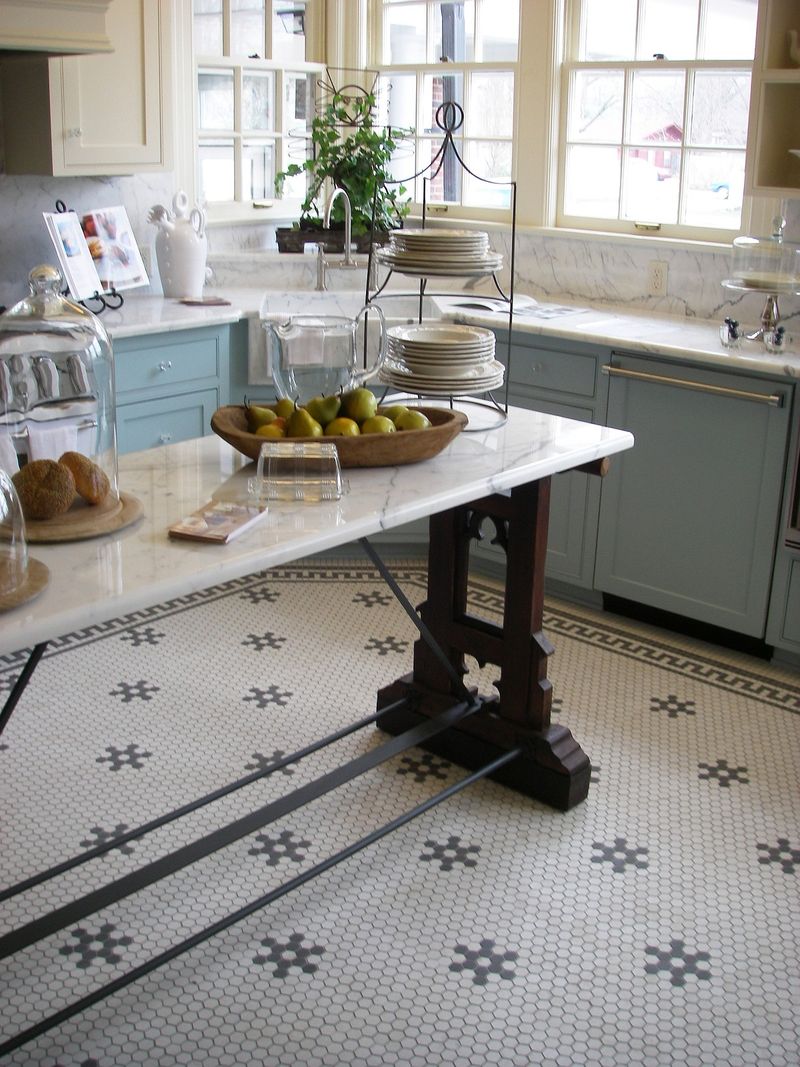
Remember when those itty-bitty penny tiles and mini mosaics were the height of kitchen chic? While undeniably pretty at first glance, they’ve become a maintenance nightmare that screams “early 2000s renovation.”
The problem isn’t just aesthetic – it’s practical. Those numerous grout lines collect dirt, food particles, and stains faster than you can say “mop.” Even with regular cleaning and sealing, they eventually look grimy and worn.
Designers are now favoring larger format tiles or seamless flooring options that create a cleaner, more modern look while being infinitely easier to maintain.
3. Terracotta Tiles
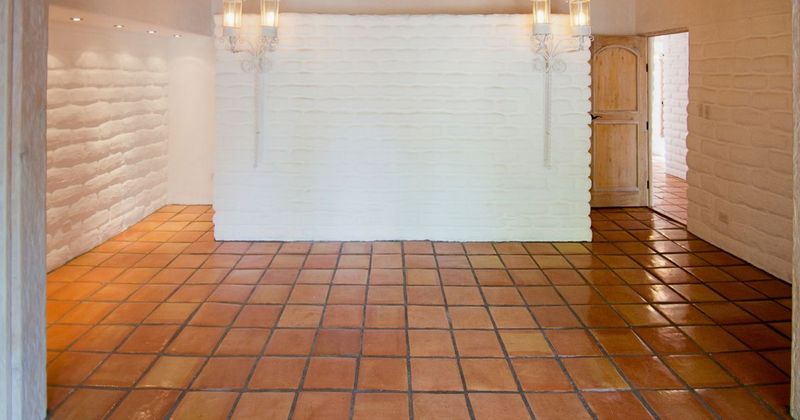
Oh, the rustic charm that once transported us straight to a Tuscan countryside kitchen! Unfortunately, those orangey-red terracotta tiles have fallen firmly into the category of design elements that instantly date your home.
What made them problematic wasn’t just their distinctive color. The porous nature of traditional terracotta means they absorb stains like a sponge and require constant maintenance and resealing.
Modern kitchens are moving toward more neutral, versatile flooring options that don’t lock homeowners into a specific aesthetic or require specialized care routines.
4. Checkerboard Black and White
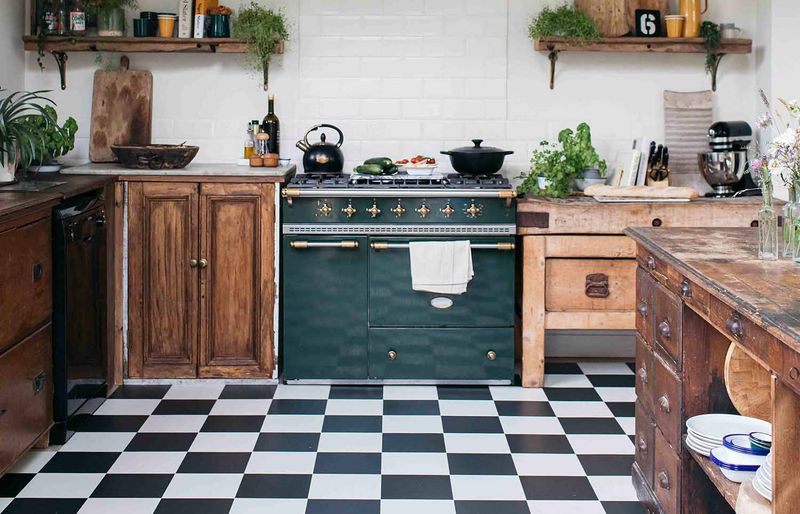
Walking into a kitchen with the classic black and white checkerboard pattern once felt like stepping into a charming 50s diner. Fast forward to 2025, and this once-timeless look has paradoxically become one of the most time-stamped flooring choices you can make.
The stark contrast between squares creates a busy visual effect that can make smaller kitchens feel cramped and disorienting. Plus, the white squares show every speck of dirt while the black ones highlight dust.
Today’s more sophisticated approach uses subtle patterns or textural variations in similar tones for interest without the dizzying effect.
5. Glossy Ceramic Tiles
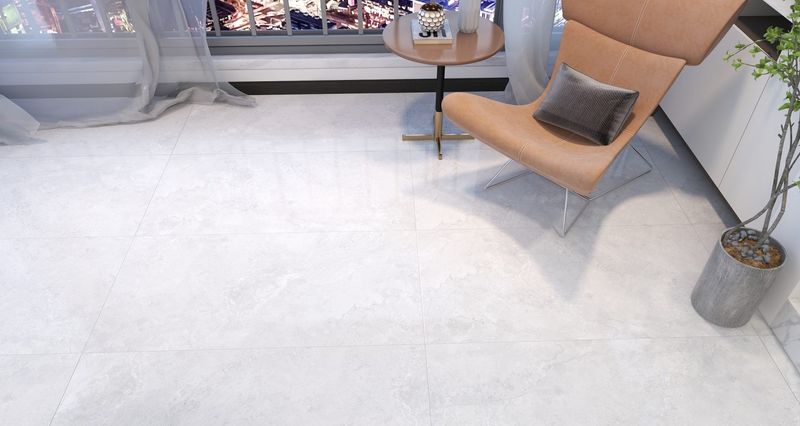
Slipping and sliding across your kitchen floor might make for a funny home video, but it’s significantly less amusing when you’re carrying hot soup. Those high-gloss ceramic tiles that were once all the rage have proven to be a genuine safety hazard in the busiest room of the house.
Beyond the slip factor, glossy surfaces show every smudge, footprint, and water spot. The constant battle to keep them looking clean has exhausted even the most dedicated housekeepers.
Modern kitchen design now favors matte or textured finishes that provide better traction while hiding the inevitable spills and smears of daily life.
6. Vinyl Sheet Flooring with Fake Patterns
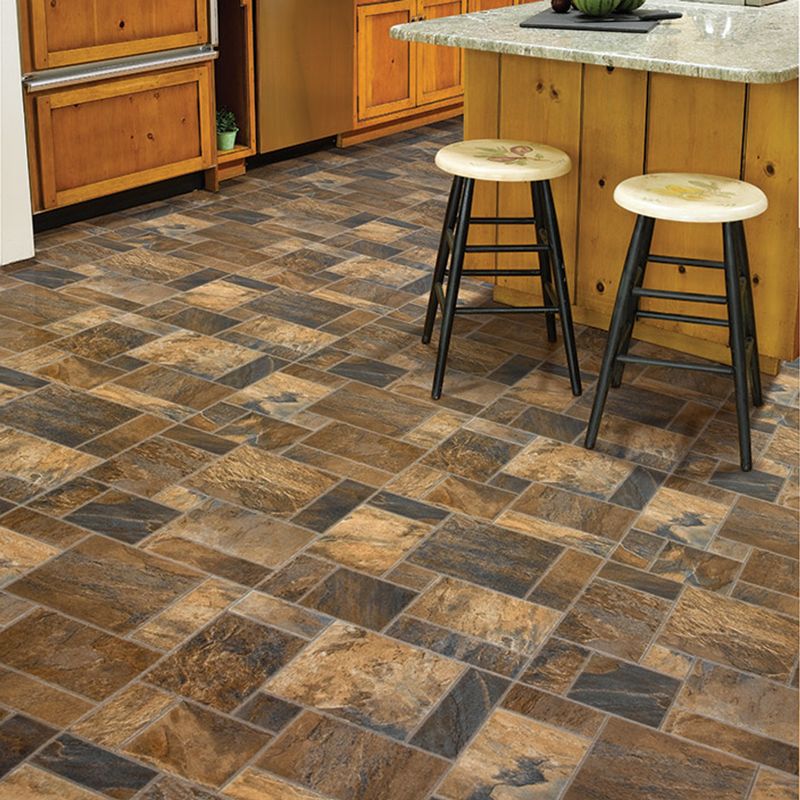
Your grandmother might have loved that vinyl sheet flooring with printed brick or stone patterns, but in 2025, these unconvincing imitations are the equivalent of wearing a tuxedo t-shirt to a black-tie event.
The low-resolution prints, obvious pattern repeats, and unnatural sheen immediately signal budget constraints rather than deliberate design choices. Even worse, sheet vinyl tends to curl at the edges over time and can be easily gouged by dropped utensils.
If you love the practicality of vinyl, luxury vinyl tile (LVT) and planks offer dramatically more realistic appearances and better durability than their sheet predecessors.
7. Bamboo Flooring
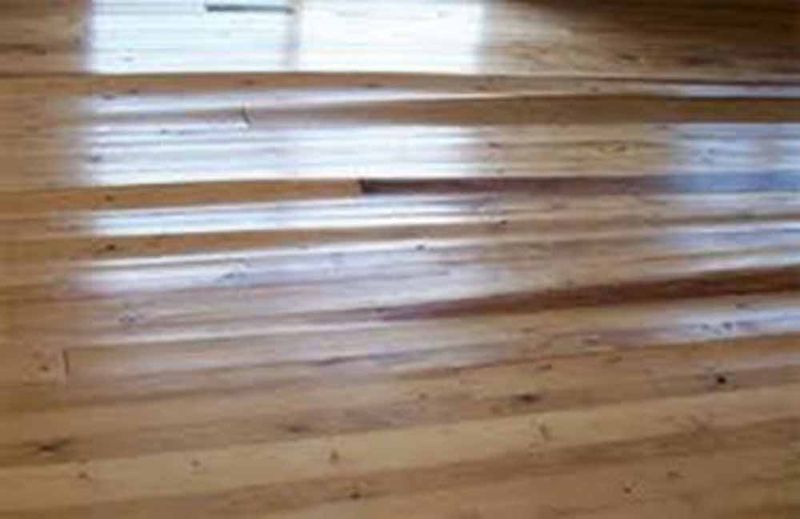
A decade ago, eco-conscious homeowners flocked to bamboo flooring as a sustainable hardwood alternative. What wasn’t advertised was bamboo’s surprising vulnerability to kitchen conditions – a classic case of good intentions meeting disappointing reality.
Despite marketing claims, many bamboo floors dent easily under heavy refrigerators or dropped pans. The real dealbreaker? Their tendency to warp when exposed to moisture and humidity – two elements abundant in any working kitchen.
For 2025 and beyond, engineered hardwoods with waterproof cores or porcelain tiles that convincingly mimic wood grain offer better performance while maintaining environmental credentials.
8. Dark Espresso Stained Hardwood

Those nearly-black espresso floors that graced every design magazine in the 2010s are quickly becoming the avocado green appliances of our era. Initially dramatic and sophisticated, they’ve revealed their practical shortcomings over time.
Every speck of dust, pet hair, crumb, or flour dusting shows up like neon signs on these ultra-dark surfaces. The constant cleaning required has driven many homeowners to the brink of floor-related breakdowns. Additionally, they tend to make spaces feel smaller and darker.
The trend has shifted toward medium-toned woods or lighter finishes that forgive daily messes while making spaces feel more open and airy.
9. Peel-and-Stick Vinyl Tiles

When TikTok and Instagram DIY videos made peel-and-stick tiles look like a weekend warrior’s dream come true, thousands of homeowners jumped on the temporary flooring bandwagon. Fast forward a few years, and those quick fixes have revealed their true colors.
The edges curl up after exposure to moisture, creating perfect traps for dirt and bacteria. Colors fade unevenly where sunlight hits, and the adhesive often fails in high-traffic areas, creating hazardous loose tiles.
In 2025’s kitchen, more permanent solutions with proper installation have returned as the gold standard, with homeowners recognizing that flooring is an investment, not a quick fashion statement.
10. Cork Mosaic Patterns

Remember cork boards from school? Now imagine that warm, bouncy material arranged in stunning geometric patterns under your feet! Cork mosaic flooring combines sustainability with eye-catching design.
Walking on cork feels wonderfully cushiony – perfect for those who spend hours cooking. The natural variations in cork coloring create subtle depth that plain flooring can’t match. Plus, it’s naturally antimicrobial and resistant to mold.
Designers are creating everything from honeycomb patterns to abstract art pieces using different cork shades. Your kitchen floor becomes a conversation piece while still being practical and comfortable!
11. Terrazzo
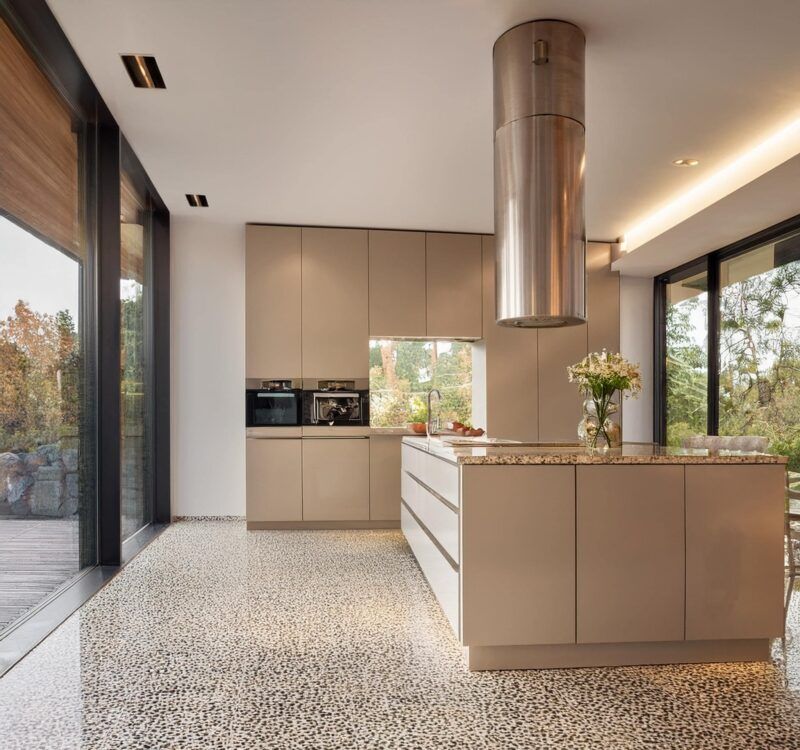
Terrazzo is having a high-design revival in 2025, and it’s more stunning than ever. Once a utilitarian material, it now comes in bold colorways and sleek finishes that make your kitchen floor a conversation piece.
Made from chips of marble, quartz, or glass set in concrete or resin, terrazzo is surprisingly durable and easy to maintain. It’s ideal for adding playful energy and personality to a modern kitchen. If you’re tired of cookie-cutter floors and ready for something with flair, terrazzo delivers.
12. Large-Format Porcelain Tiles
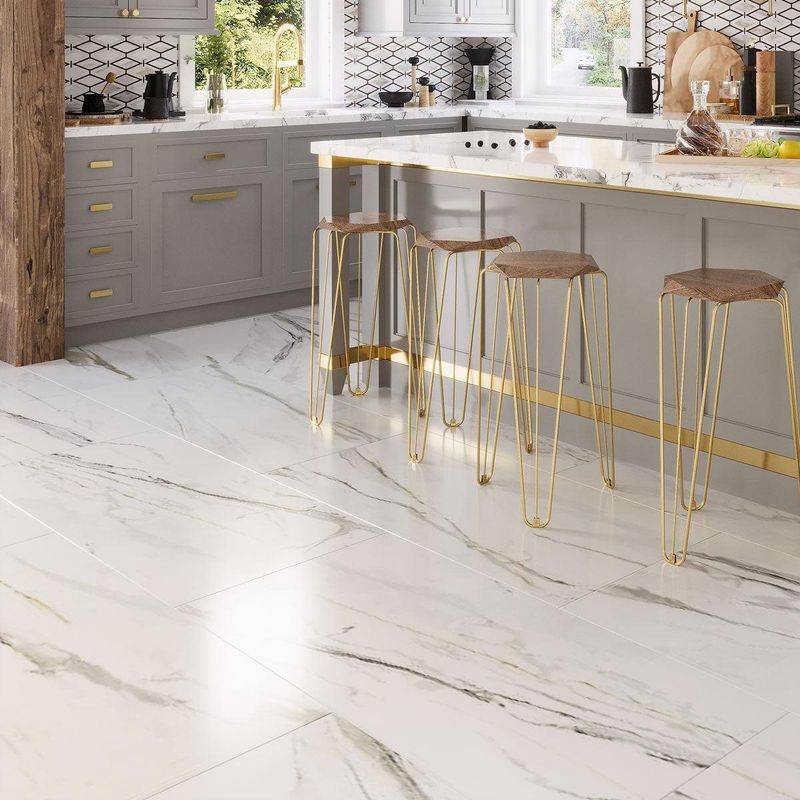
Bigger is better in 2025, especially when it comes to tile. Large-format porcelain slabs are dominating modern kitchens, offering a clean, continuous look that’s easy to maintain. Fewer grout lines mean less hassle, and the sleek design instantly elevates the space.
These tiles come in everything from marble-inspired finishes to concrete looks, making them a chameleon for any kitchen style. They’re durable, water-resistant, and surprisingly warm underfoot with the right underlayment. If you want a seamless, upscale vibe—this one’s a win.
13. Textured Natural Stone
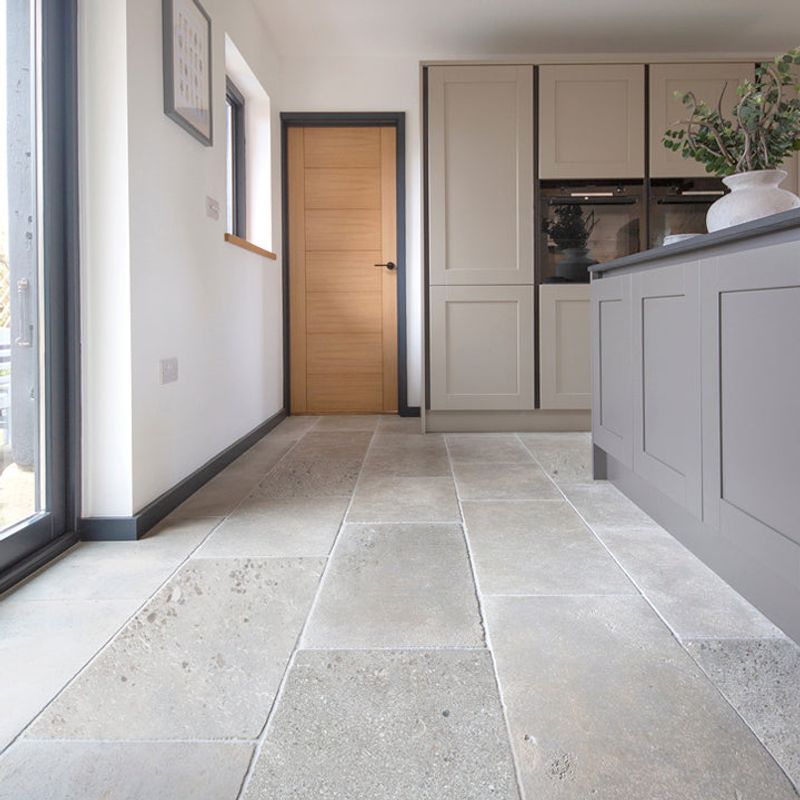
Textured limestone, slate, and travertine are making a quiet comeback—but with a twist. Instead of polished perfection, 2025’s stone floors embrace a raw, natural surface that adds depth and character to the kitchen.
The subtle variations in tone and texture bring an organic charm that pairs well with earthy, minimalist palettes. Bonus: the slightly uneven finish offers more grip underfoot. If your goal is timeless elegance with an edge, this type of stone floor delivers rustic beauty and practicality in one solid step.
14. Leather Tile Sections
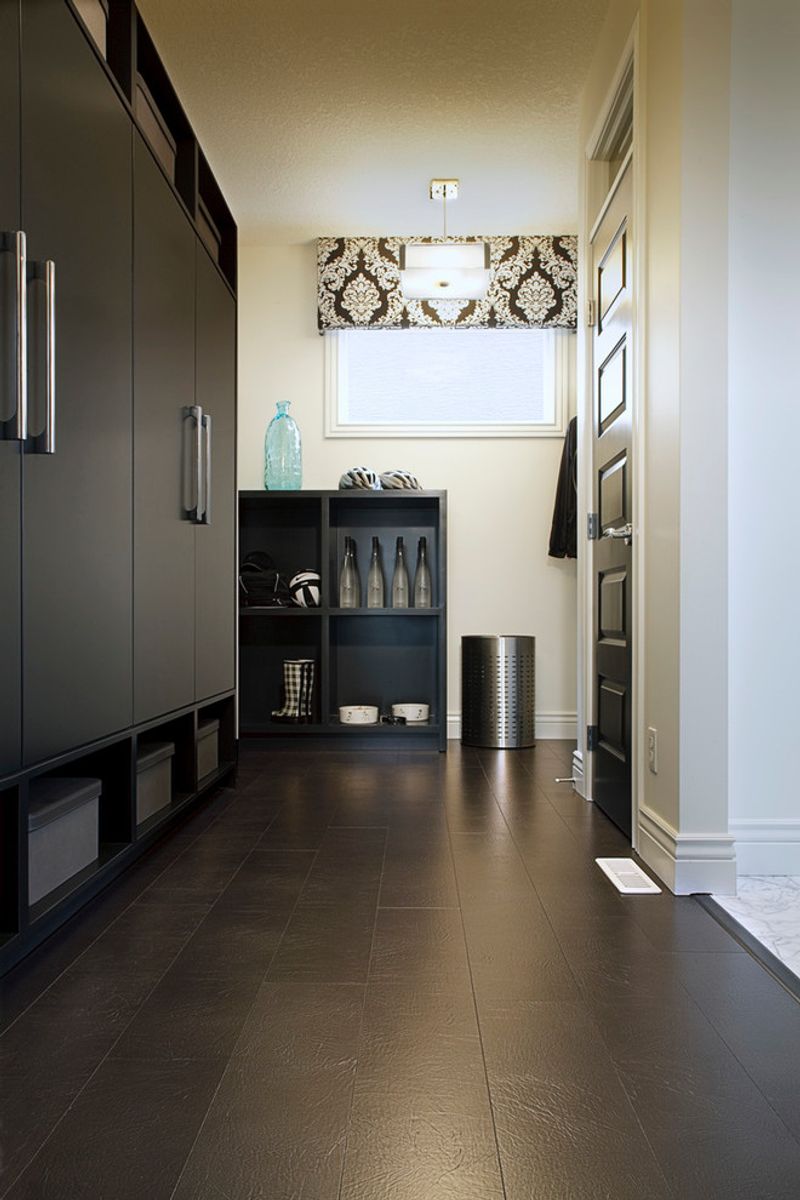
Luxury has a new texture underfoot! Leather floor tiles are making a surprising entrance into kitchen design circles. These aren’t your typical belts and shoes – they’re specially treated leather pieces engineered specifically for flooring durability.
The rich, warm patina develops beautifully over time, similar to how leather furniture gains character. Special treatments make them remarkably resistant to water and stains. Designers often install them in dining areas or islands rather than prep zones, creating distinct activity areas within open kitchens.
Color options range from traditional cognac and chestnut to unexpected blues and greens. The subtle texture provides excellent slip resistance while feeling wonderfully soft underfoot!
15. Engineered Hardwood

Wood in the kitchen? Yes, and it’s smarter than ever. Engineered hardwood offers the warmth and richness of real wood while holding up better to humidity and spills. In 2025, expect to see lighter, Scandinavian-inspired tones and wire-brushed finishes that hide daily wear beautifully.
It’s a go-to for open-concept homes where the kitchen flows into living areas. While not bulletproof, it balances beauty and resilience like few materials can. For those who want cozy charm without sacrificing function, this one’s a strong contender.
16. Sealed Concrete
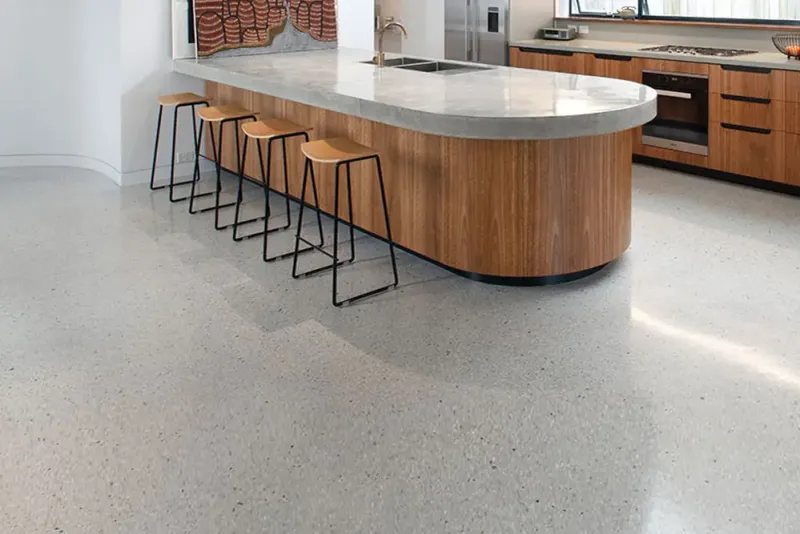
For lovers of a more industrial or minimalist look, sealed concrete remains a top-tier choice. This year’s versions are smoother, warmer in tone, and often finished with a satin sealant for a softer sheen. It’s durable, stain-resistant, and ideal for radiant heating systems. You can tint it, stencil it, or leave it raw—each option creating a subtly unique result. Best of all, it gives your kitchen a grounded, architectural feel that works beautifully with open spaces and modern cabinetry.
17. Patterned Ceramic Tile
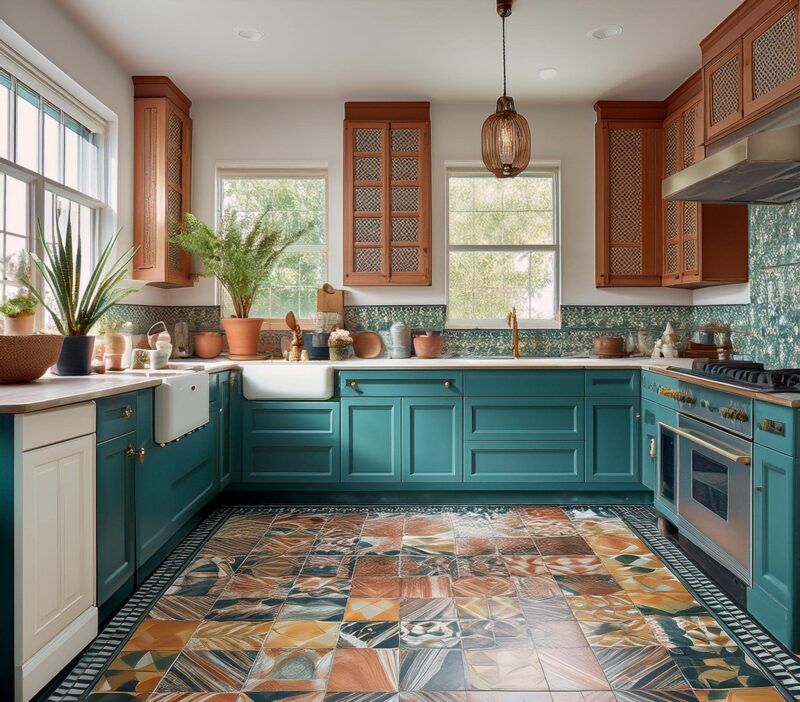
Statement floors are very much in this year, and patterned ceramic tile is leading the charge. Think geometric prints, Moroccan mosaics, or Mediterranean motifs in bold or muted palettes. These tiles turn the kitchen into a visual feast without overwhelming the rest of the room.
They’re easy to clean and practically immune to spills, which makes them as functional as they are fun. For those craving personality underfoot, patterned tile offers a bold way to show it without touching the walls.

